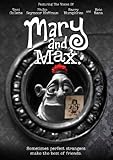from The Forecaster:
[url]http://www.theforecaster.net/news/print/2012/04/03/maine-deaf-film-festival-expands-4-days-portland/118750[/url]
Maine Deaf Film Festival expands to 4 days in Portland
Apr 03, 2012 9:50 am
10th annual Maine Deaf Film Festival
PORTLAND — The 10th annual Maine Deaf Film Festival seeks to educate audience members about what it is like to be deaf.
The annual student-run festival, April 11-14 at the University of Southern Maine, showcases homegrown and international films created, produced and performed by members of the deaf community. With the festival, the American Sign Language Club at USM hopes to educate people about deaf culture, issues and art.
“We offer a full roster of films and the movies that we tend to screen are authentic from a deaf perspective, not just a Hollywood film portraying an outsider or poor, deaf people,” said Esther Lee-Samia, an administrative assistant in the university’s Linguistics Department. “The films are produced, executed and performed by deaf people, and present issues from their perspective.”
This year is the first time that the event will stretch over four days. On Wednesday, selected local and international films will be screened in Payson Smith Hall, Room 303, from 7-9:30 p.m. Thursday’s showings will take attendees back in time with a retrospective of films from past years. The retrospective program costs $5 for the general public. All events are free to USM students with their ID cards.
Friday night’s screening presents “The Hammer,” a coming-of-age drama about Matt Hamill, a UFC fighter, who became the first deaf wrestler to win a national collegiate championship. The film will be shown from at 7:30 p.m. in Talbot Auditorium in Luther Bonney Hall. Admission is $10.
Saturday is packed with family-friendly selections covering topics ranging from navigating the health-care world to deaf teen Aneta Brodski’s journey into the spoken-word slam scene. General admission for Saturday showings is $8 for a half day or $14 for the full day. In addition to the film screenings, guest speakers including some of the films directors and talent, will address attendees.
According to Lee-Samia, in the past around 200 people have taken in the films. But with the festival expanding to four days this year, she hopes that attendance will jump to between 400 and 500.
“We have a very loyal following,” she said. “And we just keep growing.”
Amber Cronin can be reached at 781-3661 ext. 115 or acronin@theforecaster.net. Follow Amber on Twitter: @croninamber.

